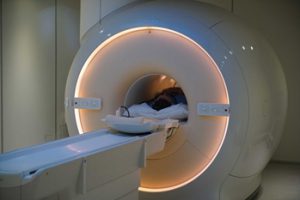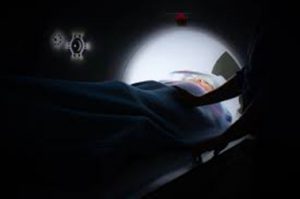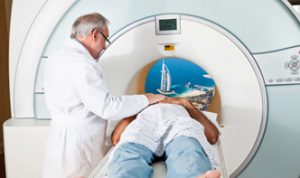
What do you mean by Claustrophobia?
Claustrophobia is a feeling of fear or restlessness of being in a tiny compact place, and in some cases, it can be because of the large number of people.
Claustrophobic patients generally feel uneasiness and suffers from the disorder due to staying in a small house for a longer period of time, or being lonely. Sometimes getting stuck in the closed elevators or inside the caves.

The MRI System
The Magnetic Resonance Imaging has a strong magnet field which produces high quality images of the internal structure of human body.
It contains a large magnet that produces radio waves which enters the human body and helps diagnose the patient`s condition.
The center of the magnet is a hollow tunnel which is called as “magnetic bore”. The patient lies inside the magnetic bore and the body part to be scanned lies at the center of the magnetic bore.
As the MRI scan begins, there is continuous meticulous sound that comes from the scanner because of the coils vibrating inside the magnetic bore.

Why is Claustrophobia associated with the MRI Systems?
Claustrophobic patients have a fear and experience a feeling of confinement or being closed in.
In magnetic resonance imaging system, as the table goes inside the magnetic bore the patient develops a fear due to the closely packed environment. Moreover, the continuous rigorous sound of the machine makes the patient`s condition worse.
Claustrophobic reactions are a major concern to performing MR examinations. As it leads to a decrease in the workflow of patients, waste of resources, and premature termination of the scans. In order to overcome these difficulties, the following are the best ways to conquer the MRI fear in claustrophobic patients.

1. Educate Yourself:
Sometimes, people get claustrophobic from the unfamiliarity of the situation. To tackle this, be aware of the MRI machine environment and what will happen during the scan. Get familiarize with the MRI machine, its noise and the duration of the exam procedure.
For many people, just seeing the machine and how it works can help reduce the anxiety.
Ask questions- Ask the technician to explain how the exam will work and show you how to use the alarm ball or mic, if you need to communicate with the technician.
Ask your doctor and technologist any questions you have as they arise because knowledge can be empowering to conquer the claustrophobia.

2.Breathing and meditation:
Sometimes, diverting your mind can help you come out from anxiety problems. To overcome, Deep and focused breathing and other meditation techniques will help to relax your mind. You can practice long and deep breathing prior to the MRI exam, so that it will help you prepare for the scan.

One of the best ways to overcome the claustrophobic problems is by entertaining the patients.
Most of the MRI centers provide with music on the ears to help reduce the noise from the machine which can help distract and keep you calm. Nowadays, MRI centers have come up with the In-bore MRI Entertainment system that gives cinema like experience to the patients. It enables the patient to watch movies, videos, news and lots more while inside the MRI bore. It successfully distracts the patients from their surroundings and taking them into a world of cinema.
An In-bore MRI Cinema provides a big win in pediatric and small kids where earlier sedation was needed. The latest technology of In-bore MRI Cinema along with the MRI Ambience helps the patient not only remove the anxiety problems but also takes the patient into a different world of MRI system.

4.Patient Company:
In order, to reduce the anxiety in MRI rooms accompany you with friend or a family member. Sometimes, being in the company of friends or loved ones can greatly help reduce the claustrophobic problems. They can even be inside the MRI room and communicate with them to help keep you calm.

5.Medical Sedation:
If any of the above ways doesn’t work and you still find the claustrophobic experience inside the MRI machine. Do consult your doctor for the sedation option. Patients suffering from claustrophobia and anxiety problems that threaten into panic attacks could be given short-acting sedatives. This will depend on the personal health history and the requirements of the particular MRI exam. Sedation may be necessary in pediatric cases if the patient is not cooperative during the scans. It is noted that sedation is not a mandatory solution to overcome claustrophobia as it carries the risk of the medications.
©2024 Kryptonite SolutionsTM. All Rights Reserved.
Powered by: Purple Tuché